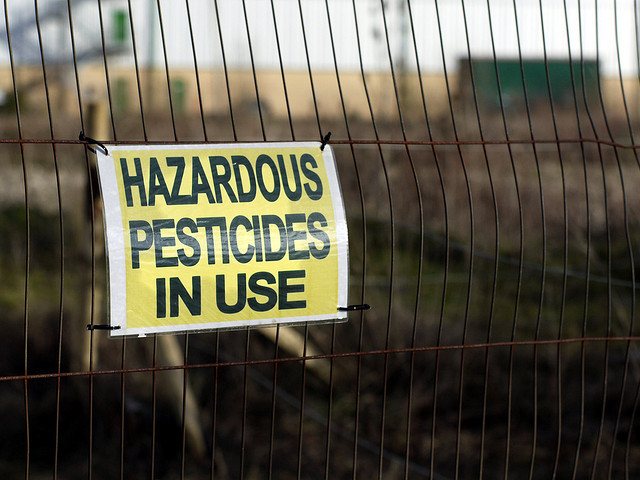Within the U.S., most chemical safety requirements are imposed by the Occupational Safety and Health Administration OSHA) and the Environmental Protection Agency (EPA). For example, OSHA (or delegated state agencies) administers a Process Safety Management (PSM) Standard, while EPA (or delegated state agencies) administers the Accidental Release Prevention (ARP) regulation. In addition to these sets of regulators, however, Congress has created a national agency to conduct independent investigations of major chemical accidents, and to issue accident-specific findings and specific or general recommendations for improved chemical handling and regulation. This agency’s formal name is the Chemical Safety and Hazard Investigation Board—which usually refers to itself as the Chemical Safety Board or CSB.
Audit, Compliance and Risk Blog
Chemical Safety Board Recommends Better Process Safety Management
Posted by Jon Elliott on Mon, Dec 15, 2014
Tags: Corporate Governance, Business & Legal, Health & Safety, OSHA, Environmental risks, Environmental, EPA, Hazcom
Waste Identification Part II: Is My “Solid” “Waste” A “Hazardous Waste”?
Posted by Jon Elliott on Mon, Dec 08, 2014
Federal and state laws govern “hazardous wastes”—the federal law is commonly called RCRA, after the Resource Conservation and Recovery Act of 1976. However, RCRA itself was enacted as an expansion of the prior Solid Waste Disposal Act of 1965, and requirements for both solid and hazardous wastes have been revised many times in recent decades. The US Environmental Protection Agency (EPA) administers these requirements nationally, delegating many provisions to individual states that qualify for authorization to assume regulatory roles.
Tags: Business & Legal, Health & Safety, Environmental risks, Environmental, EHS, Hazcom
Waste Identification Part I: Is My Material A “Solid” “Waste”?
Posted by Jon Elliott on Mon, Dec 01, 2014
Federal and state laws govern “hazardous wastes”—the federal law is commonly called RCRA, after the Resource Conservation and Recovery Act of 1976. However, RCRA itself was enacted as an expansion of the prior Solid Waste Disposal Act (SWDA) of 1965, and requirements for both solid and hazardous wastes have been revised many times in recent decades. The US Environmental Protection Agency (EPA) administers these requirements nationally, delegating many provisions to individual states that qualify for authorization to assume regulatory roles.
Tags: Business & Legal, Health & Safety, Environmental risks, Environmental, EPA, Hazcom, RCRA
U.S. And China Try To Change The Climate Change Conversation
Posted by Jon Elliott on Wed, Nov 26, 2014
On November 12, U.S. President Barack Obama and Chinese President Xi Jinping announced a bilateral agreement to cut greenhouse gas (GHG) emissions. Since these countries are the two biggest economies and largest emitters of GHGs – and are in a period when they seem to disagree about almost everything – this agreement has substantial symbolic value. But will it have much practical value?
Tags: Business & Legal, Environmental risks, Environmental, Greenhouse Gas, ghg
Strategic planners around the world are preparing “climate change adaptation plans,” designed to identify their organization’s key activities and missions, evaluate how climate change might affect them, and develop organizational changes designed to anticipate and adapt in ways that preserve the organization’s performance. On October 31, the US Environmental Protection Agency (EPA) issued its own Climate Change Adaptation Plan. EPA’s divisions (Water, Air and Radiation, etc.) and 10 regional offices also issued plans covering their activities. These Plans provides a collective model for multi-level organizational plans, and also tell organizations in the US what help to expect from EPA when they plan for their own adaptations to climate change.
Tags: Corporate Governance, Business & Legal, Environmental risks, Environmental, EHS, EPA, Greenhouse Gas, climate change
STP Launches New Online Gap Analysis Tool
Auditors and Quality Managers across all manufacturing and service industries use ISO and OHSAS standards to put their Environmental and Health and Safety Management Systems into practice. These standards help implement effective and efficient EHS requirements, or VPP Occupational Health and Safety Management Systems. In this blog I review and summarize the two standards, their aims and obligations.
Tags: Corporate Governance, Business & Legal, International, Health & Safety, Environmental risks, Environmental, EHS
In September I blogged about OSHA’s Airborne Contaminant Standard, which sets ambient air limits for over 400 workplace air contaminants to protect employees from exposures to airborne chemical and particulate contaminants in workplace air. In October, OSHA issued an extensive Request for Information (RFI), asking for comments on a variety of approaches to setting these limits in the future. In the RFI, OSHA notes that most exposure limits date from 1971, and so they don’t reflect four decades of advances in understanding of chemical toxicology. OSHA is attempting to build on legal requirements for standard-setting developed by court cases since 1971, and to update—the agency doesn’t say finesse—some of the limitations. The RFI asks over 50 questions, and solicits comments no later than April 8, 2015.
Tags: Corporate Governance, Business & Legal, Health & Safety, OSHA, Environmental risks, Environmental
PHMSA Requires Advance Notice of Construction-Related Events
Posted by Allison Campbell on Mon, Oct 20, 2014
To ensure that operations at gas pipelines, gas pipeline facilities, and LNG plants and facilities are in compliance with a range of conditions, operators of such plants and facilities must provide the US Department of Transportation Pipeline and Hazardous Materials Safety Administration (PHMSA) with 60 days’ advance notice of construction-related events. This advance notice allows time for reviews and inspections to identify any potential compliance issues and avoid costly design changes or delays.
Tags: Corporate Governance, Business & Legal, Health & Safety, Environmental risks, ghg, fracking, hydraulic fracking, Oil & Gas
Environmental State Differences Checklists Expanded to Include Operator Certification Requirements
Posted by Melanie Powers on Thu, Oct 16, 2014
Striving to meet wastewater compliance limits? Your treatment processes are only as good as the operators running your facilities—which is why every state and Puerto Rico have set specific operator certification standards for wastewater treatment plants. Do you know your state's requirements for:
Tags: Corporate Governance, Business & Legal, Environmental risks, Environmental, EHS, STC
Earthquakes: Are You Ready to “Shake Out” on October 16?
Posted by Allison Campbell on Tue, Oct 14, 2014
Once a year in our office, someone walks through the halls ringing an old-fashioned school bell. We immediately stop what we are doing, crawl under our desks and brace ourselves, and wait. A few moments later, one of our earthquake marshals comes by to tell us that it is safe to leave the building, and we carefully make our way down the stairs to the designated meeting spot. After checking the staff list and verifying that everyone made it out “safely,” our marshals let us return to our work. It wasn’t an earthquake—this time.
Tags: Corporate Governance, Business & Legal, Employer Best Practices, Health & Safety, Environmental risks, Environmental










